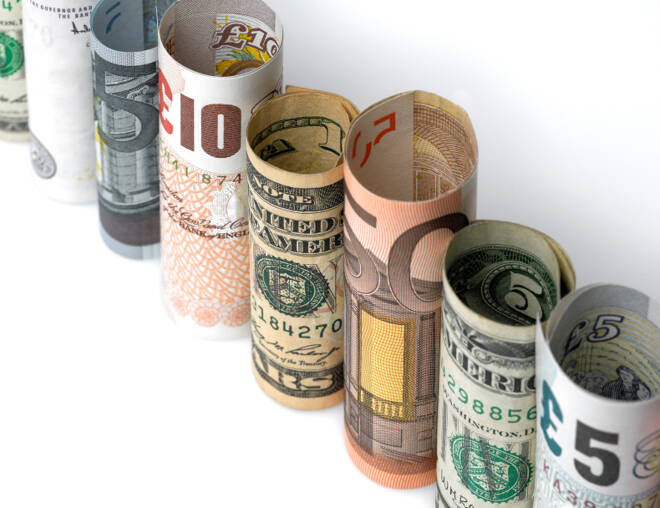Advertisement
Advertisement
Weak Philly Fed Data Crushes Dollar, Raises Concerns Over Tariff Impact on Economy
By:
The Philly Fed report said business activity fell from 34.4 in May to 19.9 in June, its lowest since November 2016. The index’s sharpest drop since January 2014.
The U.S. Dollar tumbled against a basket of currencies on Thursday, mostly in reaction to a report showing weak U.S. manufacturing data. The U.S. Dollar index surged to an 11-month high early in the session, but then broke sharply throughout the day after the Philadelphia Federal Reserve’s gauge of U.S. Mid-Atlantic business activity fell to near a 1 ½ year low.
The Philly Fed report said business activity fell from 34.4 in May to 19.9 in June, its lowest since November 2016. The index’s sharpest drop since January 2014 came amid escalation in a U.S.-China trade conflict, which has underpinned safe-haven support for the dollar in recent days.
Some traders said the Philly Fed miss to the downside was a convenient excuse for dollar bulls to take profits.
Euro
The EUR/USD recovered from tis weakest level since July 2017 which was tied to bets on a protracted period of monetary policy divergence between the U.S. Federal Reserve and the European Central Bank. Essentially, the dollar has been strengthening against the Euro because the Fed has been and is expected to me more aggressive in raising interest rates.
The Fed is expected to raise interest rates at least two more times in 2018 and perhaps as many as three times in 2019, while the ECB has said it is not going to consider raising rates until at least July 2019.
Early in the session on Thursday, the Euro was pressured after the Italian government appointed two euroskeptics to head key finance committees, reigniting worries about anti-Euro voices in the Euro Zone’s third largest-economy.
British Pound
The GBP/USD rose over 0.5 percent at $1.3243 on Thursday, recovering from a seven-month low after the Bank of England’s chief economist, Andy Haldane, unexpectedly joined those calling for rates to rise to 0.75 percent, citing concerns about growing wage pressure.
However, Haldane’s vote was not enough to convince other BOE policymakers to flip to the hawkish side with the central bank voting to leave its benchmark interest rate to 0.5 percent.
U.S. Economic Data
In other news, U.S. Weekly Unemployment Claims came in at 218K, better than the 220K forecast. The Home Price Index (HPI) was 0.1%, lower than the 0.3% estimate. The Conference Board’s Leading Index was also lower than expected. It posted a 0.2% increase versus a forecast of 0.4%.
Finally, banks cleared the Federal Reserve’s latest test of their ability to withstand another economic doomsday, but the real test for investors comes next week, when banks reveal how much they are able to pay out in dividends and share buybacks.
About the Author
James Hyerczykauthor
James is a Florida-based technical analyst, market researcher, educator and trader with 35+ years of experience. He is an expert in the area of patterns, price and time analysis as it applies to futures, Forex, and stocks.
Did you find this article useful?
Latest news and analysis
Advertisement
